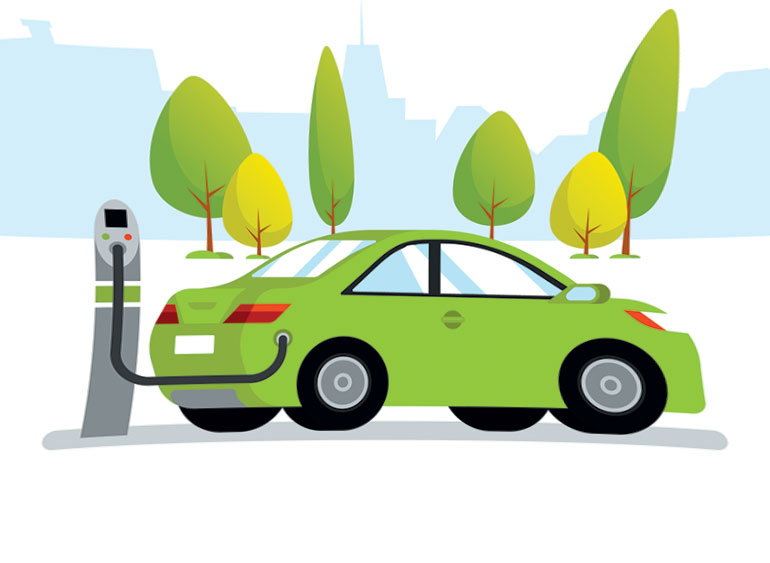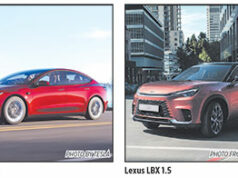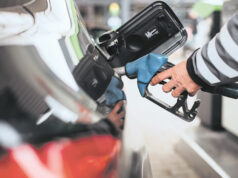The Philippines’ push for electric mobility

Sales of electric vehicles (EVs) in the Philippines are expected to rise by 7% in 2025, with annual purchases projected to reach 20,000 units for the first time.
Rommel R. Gutierrez, president of the Chamber of Automotive Manufacturers of the Philippines, Inc. (CAMPI), said EVs will likely account for 4% of the estimated 500,000 vehicle purchases this year.
In January alone, 1,600 EVs were sold, making up 5.36% of total car sales. Hybrid electric vehicles (HEVs) has 1,445 units sold, followed by battery electric vehicles (BEVs) with 146 and plug-in hybrid electric vehicles (PHEVs) with nine.
Last year, EV sales in the country hit 18,690 units. CAMPI data show sales climbed from 187 units in 2019 to 344 in 2020 and 810 in 2021.
At a public forum in November, Energy Undersecretary Rowena Cristina L. Guevara said the country’s EV market is gaining steady momentum. “If you compare EV sales from last year to this year, I think they either doubled or tripled. Growth was slow, but it’s getting there,” she said.
In 2018, a market study by Frost and Sullivan revealed that 46% of Filipino consumers were open to purchasing an EV, which is considered as one of the highest rates in Southeast Asia.
Toyota Motor Philippines remains the market leader, holding more than 72% of the EV sector as of the third quarter of 2024. The company’s HEV sales surged 186% year over year. Toyota introduced the Prius to the Philippines in 2009, becoming a pioneer in hybrid vehicle offerings.
Government efforts and industry initiatives
The Electric Vehicle Industry Development Act (EVIDA), signed into law in 2022, requires corporations to include EVs in their fleets and provides various incentives for consumers.
The EVIDA aims to help the country meet its Nationally Determined Contributions (NDCs) by reducing greenhouse gas emissions by 75% by 2030. The government seeks to cut the transportation sector’s significant share of air pollution and carbon emissions by promoting EV adoption and expanding charging infrastructure.
The transportation sector accounts for 56% of outdoor air pollution in Metro Manila. EVs help address this by eliminating tailpipe emissions and producing 54% fewer lifetime carbon emissions than traditional internal combustion engine (ICE) vehicles.
The Department of Energy (DoE) plans to accelerate the growth of electric mobility through its Comprehensive Roadmap for the Electric Vehicle Industry (CREVI). The roadmap targets a 50% EV fleet share by 2040, with an interim goal of 2.45 million EVs, including cars, motorcycles, tricycles, buses, and public utility vehicles, by 2028.
Among these, 415,000 HEVs, 69,000 PHEVs, and 69,000 BEVs are targeted.
Government policies have also supported the EV industry’s expansion, particularly the Executive Order No. 62, which took effect in July 2024, that grants zero tariffs on imports of BEVs, PHEVs, and HEVs until 2028.
PHL as EV manufacturer
Ma. Corazon H. Dichosa, executive director of the Board of Investments (BoI) Industry Development Services, said the Philippines could focus on commercial electric vehicle production as an entry point into the broader market through public utility vehicle (PUV) modernization.
“We still have not missed the boat of EV manufacturing since we are already on the boat,” said Ms. Dichosa. She noted that several electric PUV and three-wheeler assemblers operate in the Philippines, along with companies that manufacture battery packs and supply essential electronic components for EVs.
Ferdinand I. Raquelsantos, chairman emeritus of the Electric Vehicle Association of the Philippines (EVAP), said the country remains competitive in the EV industry despite lagging behind regional players.
“Although we have been overtaken by others, I still believe if we can develop local production of commercial vehicles, not only can we supply the Philippine market but also export because nobody is making commercial vehicles in ASEAN,” he said.
With most EV manufacturers focused on passenger cars, the Philippines has an opportunity to serve an underserved market by producing Asian utility vehicles, including delivery vans and public transport vehicles. This strategy could establish the country as a leading EV commercial vehicle producer in the region.
Meanwhile, EVs in general provide a lower total cost of ownership. Maintenance expenses for EVs are approximately 50% lower than those for gasoline-powered cars. Since the country imports over 90% of its oil, reducing fuel dependency through EV adoption enhances energy security and improves the national trade balance.
Investing in electric mobility
The scarcity of charging stations remains one of the biggest barriers to electric vehicle adoption in the Philippines. The country currently has only 592 charging stations — far from what is needed for mass adoption.
The Asian Development Bank (ADB) signed a $100-million financing package with Ayala Corp. to develop electric vehicle charging stations and procure EVs for commercial distribution.
The Canadian Climate and Nature Fund for the Private Sector in Asia (CANPA) will also contribute to the investment, supporting sustainable transport initiatives across the region.
“This project is a significant step towards a sustainable and low-carbon future for the Philippines,” said Pavit Ramachandran, ADB’s Country Director for the Philippines. “By fostering a robust electric mobility ecosystem, we are addressing critical environmental challenges such as air pollution, while also driving economic growth through green jobs and enhancing energy security.”
While challenges such as high initial costs and limited charging infrastructure persist, industry leaders remain optimistic by ramping up efforts to expand the country’s EV ecosystem. — Mhicole A. Moral



